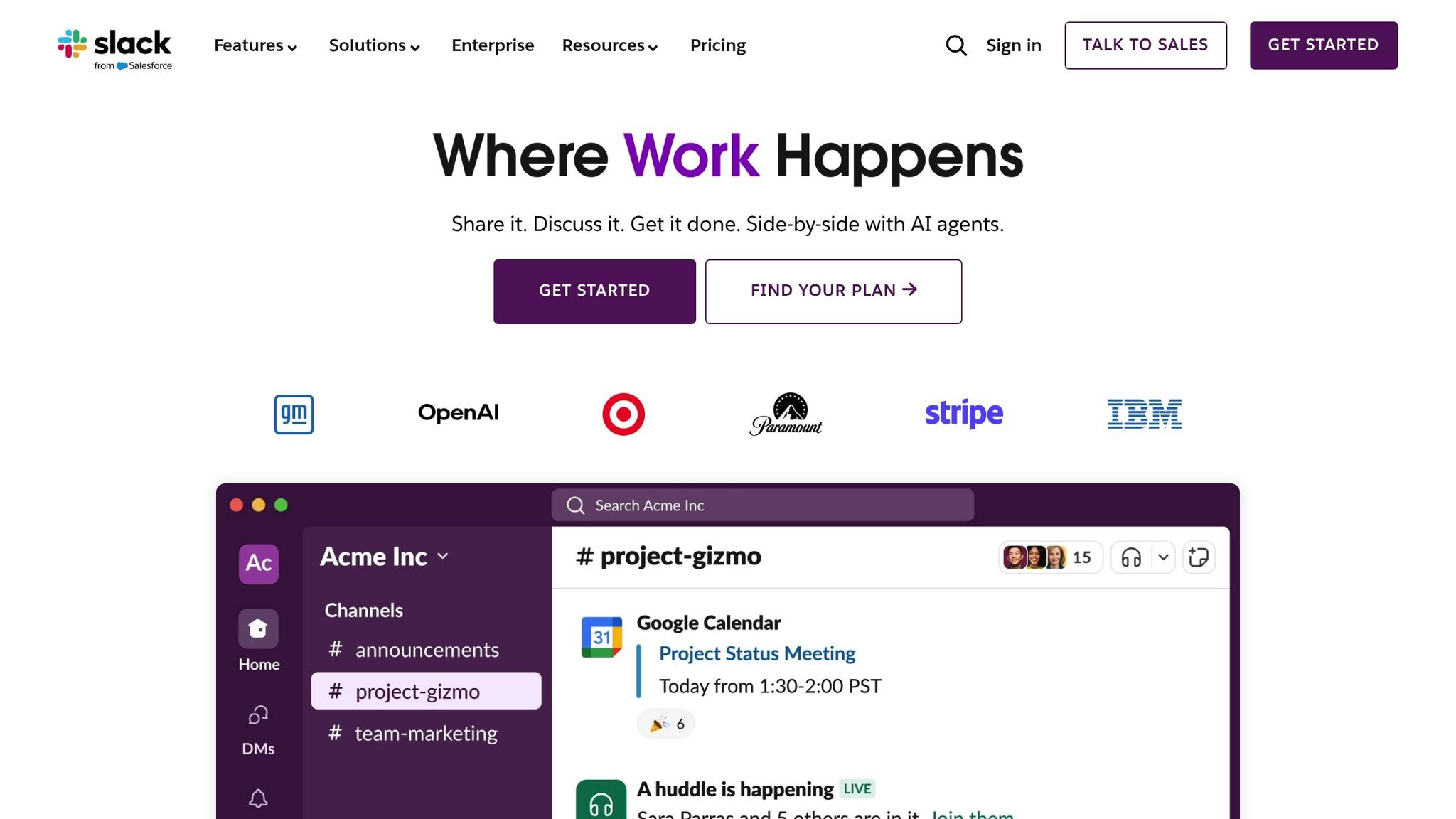Managing cash flow is critical for startups, especially when every dollar counts and investors demand clarity. Here's the bottom line: manual methods, like spreadsheets, are slow, prone to errors, and often outdated. AI-driven forecasting, on the other hand, automates data collection, provides real-time updates, and improves accuracy by up to 30%.
Key Takeaways:
- Manual Forecasting: Relies on spreadsheets, manual data entry, and periodic updates. It’s time-consuming and error-prone, especially as transaction volumes grow.
- AI Forecasting: Automates data integration, predicts trends using historical patterns, and flags anomalies instantly. Faster, more precise, and scalable for growing businesses.
- Why It Matters: With AI, startups can make quicker decisions, avoid financial pitfalls, and build investor confidence without wasting hours on manual updates.
Quick Comparison:
| Factor | AI Forecasting | Manual Methods |
|---|---|---|
| Accuracy | Reduces errors by up to 50% | Prone to miscalculations |
| Speed | Forecasts in minutes | Takes hours or days |
| Real-Time Updates | Automatic | Requires manual input |
| Scalability | Handles large volumes effortlessly | Limited by human capacity |
| Cost Over Time | Higher upfront, lower ongoing | Lower upfront, higher labor costs |
For startups, AI isn’t just a convenience - it’s a smarter way to handle finances, save time, and avoid costly mistakes.
Build an AI Agent to Optimize Cash Flow | Forecast, Alert & Control Finances in Real Time
Manual Cash Flow Forecasting Methods
Despite its drawbacks, manual cash flow forecasting remains a staple for many finance teams, though it's clear why alternatives are gaining traction.
Spreadsheet-Based Processes and Manual Data Entry
Many finance teams rely on spreadsheets to track revenue, expenses, and cash flow categories. This involves manually pulling data from bank statements, invoices, and payroll systems into pre-designed templates.
But let’s face it - this process takes a LOT of time. Finance professionals often juggle multiple systems, exporting reports and manually entering figures. And when humans are involved, errors are inevitable. A misplaced decimal or a tweaked formula can throw off the entire forecast. As transaction volumes grow, these small mistakes can snowball, making forecasts increasingly unreliable.
These inefficiencies also lead to bigger challenges, especially when it comes to consolidating data.
Data Consolidation and Accuracy Problems
Data doesn’t exist in one neat place. It’s scattered across accounting tools, CRM platforms, payroll systems, bank accounts, and credit cards. This forces teams to manually piece together outdated numbers, which increases the risk of errors.
Here’s the kicker: by the time all the data is collected, it’s often already outdated. This means forecasts reflect past transactions instead of the current financial picture. Add multiple team members working on different spreadsheet versions, and you’ve got a recipe for confusion. Which numbers are correct? Who has the latest version? It’s a constant guessing game.
Because updating these spreadsheets is so time-consuming, it doesn’t happen often enough. Decision-makers end up relying on stale data, which doesn’t help when you need to make quick, informed decisions.
For startups, this delay can be especially damaging.
Impact on Startup Decision-Making
When insights are delayed, startup founders miss opportunities to make critical adjustments. This can lead to poor decisions and missed chances to seize growth opportunities.
"Keeping track of my finances used to be overwhelming, but now it's much simpler." - Erez Lugashi, Founder and CEO @Abilisense
This quote sums up the frustration many startup founders feel when dealing with manual financial processes. Inconsistent, outdated reports can also shake investor confidence, making it harder to secure funding.
For startups running on tight budgets, even a short delay in identifying a cash flow problem can be disastrous. It might mean not being able to pay essential bills or meet payroll on time. This highlights why traditional, manual forecasting methods often fall short in today’s fast-paced business environment.
AI-Driven Cash Flow Forecasting
AI-driven cash flow forecasting takes the guesswork out of managing finances by automating processes and delivering real-time insights that help startups stay ahead.
Automated Data Integration and Real-Time Updates
AI tools work tirelessly behind the scenes, pulling data from multiple sources at once - bank accounts, ERP systems, invoicing software, CRM platforms, and payroll systems - all without needing manual input.
But it doesn’t stop at just gathering data. AI systems clean and standardize the information in real time, catching duplicate entries, fixing formatting issues, and flagging missing details before they can disrupt your forecasts. This means you no longer have to worry about outdated spreadsheets or inconsistent data sabotaging your financial planning.
Machine learning algorithms also refine forecasts over time by analyzing shifting financial patterns, creating a solid foundation for accurate, forward-looking insights.
Predictive Analytics and Anomaly Detection
Once the data is in order, AI steps up to predict future trends. It examines historical financial patterns, customer payment behaviors, and seasonal trends to project future cash flow with impressive precision. In fact, companies using AI for forecasting report a 20–30% boost in accuracy and faster decision-making.
What makes AI even more valuable is its anomaly detection capabilities. It constantly scans your financial data for anything unusual. For instance, if a key customer changes their payment habits, expenses suddenly spike, or revenue dips below expectations, the system flags these anomalies immediately. This early warning system gives you the chance to tackle potential problems before they escalate into full-blown crises.
AI also excels at scenario planning. Wondering how hiring new team members might affect your cash flow over six months? Or what losing a major client would mean for your runway? AI can simulate these "what-if" scenarios in seconds, empowering you to make smarter, faster decisions.
Improved Speed, Accuracy, and Scalability
AI transforms forecasting by addressing the delays and errors often seen in manual processes. Tasks that used to take hours - or even days - are now completed in minutes. AI models cut error rates by as much as 50%, giving businesses the agility to act on opportunities or challenges as they arise.
Another advantage is scalability. Whether your startup processes 100 transactions a month or 10,000, AI systems handle the workload with ease. There’s no need to hire extra staff or spend more time on data entry as your business grows.
By eliminating human errors like typos or formula mistakes and accounting for complex variables - such as how marketing spend impacts customer payments or how economic trends influence your industry - AI ensures more reliable forecasts.
For startups operating on tight budgets, the combination of speed, accuracy, and scalability isn’t just helpful - it can be the key to survival and long-term success.
AI vs Manual Forecasting: Side-by-Side Comparison
AI and manual forecasting methods differ in several key aspects. Recognizing these differences can help startups decide which approach aligns better with their goals, resources, and operational demands.
Key Metrics Comparison Table
| Factor | AI-Driven Forecasting | Manual Methods |
|---|---|---|
| Accuracy | Reduces errors by up to 50% | Prone to miscalculations and inconsistencies |
| Speed | Produces forecasts in minutes | Can take hours or even days |
| Real-Time Updates | Automatically updates data in real time | Requires manual updates and periodic checks |
| Scalability | Handles large transaction volumes with ease | Limited by human time and capacity |
| Error Rates | Cuts errors significantly | Susceptible to typos and calculation mistakes |
| Data Integration | Seamlessly consolidates data from multiple sources | Involves manual, time-intensive data aggregation |
| Scenario Planning | Enables instant "what-if" simulations | Needs time-consuming recalculations for each scenario |
| Cost Over Time | Higher initial investment but reduces long-term operational costs | Lower upfront costs but higher ongoing labor expenses |
This comparison highlights how AI excels in speed, accuracy, and scalability, making it a compelling option for many startups.
Why AI Outperforms Manual Methods
AI stands out because it continuously improves its predictions as new data becomes available. Its ability to analyze patterns and update forecasts in real time gives it a significant edge over manual methods.
For startups in fast-paced industries, this speed advantage can be a game-changer. Imagine a scenario where investors request updated financial projections during a funding round. Instead of spending hours revising spreadsheets, an AI system can deliver precise forecasts in minutes, allowing startups to focus on other critical tasks.
Consistency is another strong point. Manual forecasting often varies depending on who handles it, introducing potential discrepancies. In contrast, AI applies a uniform analytical framework every time, ensuring reliable and repeatable results.
AI also detects subtle patterns that might escape manual analysis. For example, it can reveal connections between marketing expenses and customer payment behavior or uncover seasonal trends that influence revenue. These insights lead to more precise forecasts and better strategic decisions.
When Manual Methods Are Still Used
Despite AI's advantages, there are situations where manual methods remain practical, particularly for startups with unique challenges or limited resources.
Startups with limited historical data - typically less than three to four years of organized financial records - may find AI less effective. Machine learning algorithms thrive on large datasets, so insufficient data can hinder their accuracy.
Irregular cash flows can also complicate AI forecasting. For businesses that rely on sporadic, high-value payments, manual methods may provide better clarity since such financial patterns are harder for AI to interpret.
For startups with simple financial structures or tight budgets, manual methods like Excel-based forecasting might be a better fit. These businesses may not need the advanced capabilities of AI at their current stage.
Poor data quality is another factor that can limit AI’s effectiveness. If historical records are incomplete or contain significant errors, cleaning and preparing the data for AI use can be more effort than it’s worth. In such cases, manual adjustments can be a more practical option.
Lastly, certain financial scenarios - like planning for large investments or one-time purchases - often involve unique factors. Here, manual oversight or a blend of AI-generated forecasts with manual fine-tuning can strike the right balance.
sbb-itb-17e8ec9
Lucid Financials: AI-Driven Forecasting for U.S. Startups

Lucid Financials is shaking up how startups manage their finances by using AI-driven forecasting. By combining bookkeeping, tax services, and CFO support, it addresses the inefficiencies of traditional, manual methods. Let’s break down how Lucid’s integrated approach is changing the game.
All-in-One Financial Management for Startups
Lucid Financials offers a comprehensive solution for startup financial management, bundling bookkeeping, tax services, tax credits, and CFO support into a single platform. This eliminates the headaches of juggling multiple vendors for different financial tasks, giving startups a streamlined way to manage their finances.
The platform is built to handle complex tax scenarios, such as equity compensation and multi-entity corporate structures. It also includes tools for discovering and maximizing R&D tax credits, helping startups uncover savings that might otherwise slip through the cracks with manual processes.
One standout feature? Lucid delivers accurate, clean books in just seven days. Its AI automates tasks like transaction matching and reconciliation, offering a speed advantage that’s crucial for startups navigating fast-moving environments. This efficiency lays the foundation for the platform’s AI-powered forecasting capabilities.
Real-Time Forecasting with AI
Lucid’s AI engine continuously updates financial forecasts, reports, and alerts based on live data. This means startups always have up-to-date insights into their cash flow and can instantly model multiple financial scenarios.
The platform shines when it comes to scenario modeling, letting founders quickly explore “what-if” situations. Whether it’s planning a hiring spree, making a big purchase, or preparing for various fundraising outcomes, Lucid’s AI eliminates the need for time-consuming manual recalculations.
For startups seeking funding, Lucid simplifies investor relations by generating board-ready reports with a single click. Instead of wasting hours updating spreadsheets, founders can deliver polished, accurate financial projections in minutes - an invaluable tool during high-stakes fundraising rounds.
What’s more, the system evolves alongside each startup. As businesses grow from pre-seed to Series C, Lucid’s AI adapts its models to reflect their changing needs, ensuring predictions remain precise and relevant.
Slack Integration and Straightforward Pricing

One of Lucid’s most user-friendly features is its Slack integration. Founders can ask financial questions - like checking cash runway, analyzing spending trends, or evaluating performance metrics - and get instant, AI-powered answers. If the AI doesn’t have the answer, human experts step in via the same Slack channel, ensuring quick and reliable support.
Lucid also addresses a common pain point for startups: unpredictable costs. The platform offers flat-rate pricing starting at $150 per month for each service area, including bookkeeping, tax, and CFO/fundraising support. This transparent pricing model is a stark contrast to the rising costs of manual data handling, which often scale with transaction volume.
For startups with fluctuating transactions, Lucid’s flat-rate approach provides a cost-effective solution. Growing companies can scale their financial operations without worrying about proportional increases in expenses. Additionally, early-stage founders on tight budgets can benefit from discounts, making Lucid’s advanced tools accessible even to those at the pre-seed stage. By offering affordable access to AI-powered financial management, Lucid is helping level the playing field for all startups, no matter their funding status.
Choosing the Right Forecasting Method
Relying on manual forecasting methods can be a major drain on time, prone to errors, and limits a startup's ability to make strategic decisions. On the other hand, AI-powered forecasting brings a game-changing approach by processing data in real time and using predictive analytics to identify potential issues long before they escalate. It replaces hours of manual effort with automated precision.
For startups navigating the challenges of fundraising and scaling, speed and accuracy are non-negotiable. Traditional methods often force founders into a tough choice: spend countless hours on financial modeling or focus on growing the business. AI eliminates this dilemma by seamlessly handling the forecasting process, freeing up valuable time for founders to prioritize what matters most.
This is where integrated solutions like Lucid Financials come into play. Lucid Financials offers a comprehensive package: clean books delivered in just seven days, real-time AI-driven forecasts, and instant Slack updates for critical cash flow metrics. With flat-rate pricing starting at $150 per month, even early-stage startups can access these advanced tools without breaking the bank. Compare this to the hidden costs of manual methods - time-consuming data entry, costly errors, and the missed opportunities caused by delayed decisions - and the value of automation becomes crystal clear.
Startups sticking to outdated manual processes risk falling behind their AI-powered competitors, who are able to make faster, smarter decisions thanks to real-time financial insights.
For founders ready to ditch the limitations of spreadsheets, platforms like Lucid Financials offer a clear and efficient path forward. By combining automated bookkeeping, AI-driven forecasting, and expert support, these tools provide the foundation startups need to thrive in a competitive landscape.
FAQs
How does AI-powered cash flow forecasting benefit startups compared to traditional methods?
How AI-Powered Cash Flow Forecasting Benefits Startups
AI-powered cash flow forecasting gives startups a major edge by providing up-to-the-minute insights into financial trends and cash flow patterns. With this technology, founders can make quicker, more informed decisions, spot potential cash shortages ahead of time, and plan strategically to sidestep financial hurdles.
Traditional forecasting methods often depend on manual analysis and historical data, which can be time-consuming and prone to error. AI, on the other hand, leverages advanced algorithms to analyze massive datasets, uncover hidden trends, and deliver forecasts with impressive precision. This combination of speed and accuracy allows startups to focus on scaling their business while keeping financial risks in check.
What are the upfront costs and long-term advantages of using AI for cash flow forecasting in a startup?
The initial investment for adopting AI-driven cash flow forecasting in startups often involves costs like software licenses, system integration, and employee training. These expenses can vary widely, ranging from a few thousand dollars to tens of thousands, depending on the platform you choose and the complexity of your business needs.
Over time, the financial benefits of AI forecasting can outweigh these upfront costs. It boosts accuracy, streamlines liquidity management, and enables data-driven decisions. These improvements can help lower operational expenses, stabilize cash flow, and open doors to growth opportunities. With features like continuous updates and scenario analysis, AI tools empower startups to adapt quickly, make informed investments, and strengthen investor trust - key factors that contribute to profitability and long-term success.
Why might a startup opt for manual cash flow forecasting instead of using AI-driven methods?
Some startups stick to manual cash flow forecasting instead of turning to AI-driven methods, and there are a few reasons why. For starters, they might not have access to the right AI tools, or they could be worried about the cost of implementation. A lack of technical know-how can also make manual forecasting feel like a safer option.
On top of that, some startups value the control and visibility that manual processes offer. They might feel that their financial operations are too complex for AI to handle effectively or prefer to keep a closer eye on things. In the early stages of a business, when systems are still being set up, founders often lean toward manual methods because they feel more familiar and less overwhelming than diving into customized AI solutions.


